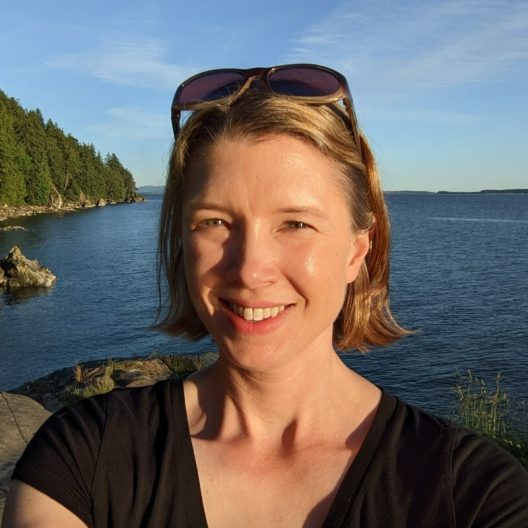Employee Spotlight: Kim Littke, Forest Nutrition Research Scientist
Get to know SEFS staff! This series provides an opportunity to find out more about SEFS staff members — what they do in their daily job and how they spend their time outside the office.
 For those non-scientists out there, what exactly does your day-to-day look like as a Forest Nutrition Research Scientist?
For those non-scientists out there, what exactly does your day-to-day look like as a Forest Nutrition Research Scientist?
My daily activities are highly variable as a Forest Nutrition Research Scientist. I manage all aspects of Stand Management Cooperative forest nutrition research projects including project planning, proposal writing, field research, data analysis, manuscript writing, and presentations. I appreciate the opportunity to change my work environment daily and manage diverse projects. My favorite part of my research position is analyzing complex systems and simplifying them so that they can be useful to the forestry industry.
What makes the UW a unique place to study and perform research science, especially as it relates to forests?
As a representative of the UW’s Stand Management Cooperative, I participate in research and coordinate with forest resource companies, government organizations, tribes, and universities. The UW provides the opportunity for all of these cooperators to meet, discuss issues, and participate in research together. These connections are valuable to understand the different perspectives currently involved with forestry in the Pacific Northwest.
When you’re spending extended time out in the field, what’s your go-to meal?
I have eaten many different kinds of food while out in the field. My go to is a peanut butter sandwich with baby carrots and chips or whatever leftovers I have from the night before. However, one time at a research site near the coast we bought a cooked crab and ate it in the woods. I don’t think I would do that again because it was incredibly messy!
What would you say to prospective students hoping to turn their love of forest science into a career?
My suggestion for students is to get to know different career options within the forest industry. The best way to do this is to get an internship with a forestry company. Once you know what career you are aiming for, choose your classes to build the necessary skill set.
Any research that you’re working on at the moment that has you really excited?
I am currently working on a project that examines the physiologic response of Douglas-fir to fertilization. I found that, even in untreated trees, there is a difference in physiology between forests that respond to fertilization and non-responders. This study was a lot of work, but I’m excited that it explains findings from previous research that I have done. It will help us understand the impact of climate change on Douglas-fir growth across the Pacific Northwest.
If you were a tree in another life, what type of tree would you have been? Why?
I would have definitely been a Douglas-fir tree. I have researched Douglas-fir from northern Vancouver Island to southern Oregon and am astonished at the various climates and soils that it can grow in. I like to think that I am adaptable like Douglas-fir and able to thrive in various work and life environments.